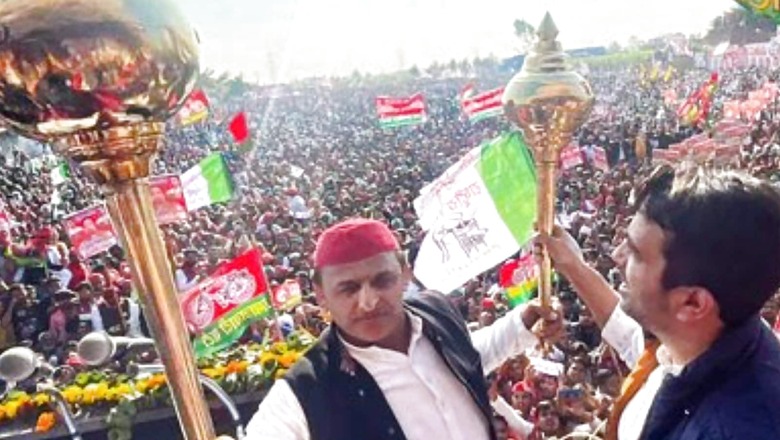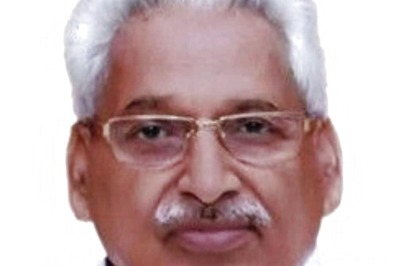
views
The Bharatiya Janata Party (BJP) has pulled off an unprecedented victory in Uttar Pradesh by becoming the first party in 37 years to win a second consecutive term in the assembly elections. In the 2017 polls, the saffron party secured a landslide victory by winning 312 seats in the 403-member assembly, but this figure dropped significantly to 272 seats along with its allies this time around.
Surprisingly, the BJP’s vote share still saw a rise from 39.67% in 2017 to 41.29% in 2022, while the Samajwadi Party (SP) managed to take a lion’s share of the anti-incumbency votes with an increase from 21.82% in 2017 to 32.06% in 2022. However, this hardly left a dent in the BJP’s numbers as they managed to comfortably cross the majority mark.
Voters signalled their disapproval of opposition parties like the Bahujan Samajwadi Party (BSP) and Congress, whose vote shares plummeted from 22.23% to 12.88%, and 6.25% to 2.33% respectively. Whether it be price hikes, rising unemployment, discontent farmers or mismanagement of the COVID-19 pandemic – all of the opposition’s major campaigning cards were put to rest by the people’s mandate. This highlights the failure in the opposition’s strategy, which relied on emphasising the BJP’s shortcomings while being ineffective at building a consolidated narrative on the ground about what they could bring to the table if elected.
A look into the SP manifesto displays vain attempts to ride on anti-BJP emotions. Proposing to build a farmers’ memorial to commemorate those who died during the protests and promising a minimum support price for all crops were direct attacks by Akhilesh Yadav on the saffron party, intending to reignite the frustration of the farming community. Similarly, as a tactic to play on the sentiments of the middle and lower class, deals on LPG, CNG and fuel were promised to tackle the price hikes on these products which were caused by the higher taxes levied on them last year. BJP’s attacks on the opposition were placed strategically around the larger focus of their campaign: Hindutva nationalism, double-engine Sarkar, welfare and security.
Even while PM Modi and Yogi Adityanath targeted the SP, BSP and Congress in their speeches during rallies, there were cadres on the ground spread across 1,63,000 booths drawing attention to the positive messaging around social welfare provided to the poor and backward classes. Preparations for this had begun as early as November last year, when Amit Shah had visited Varanasi to assess organisational activities that involved the participation of 50 lakh workers across the state who were being deployed up to the level of the ‘panna pramukh’ – voter list page in-charges. While Akhilesh Yadav relied on rhetoric that elaborated on “safeguarding the constitutional values instilled by Ambedkar,” and Rahul Gandhi emphasised the “Union of States” clause, these strategies show an overestimation of how much ideology mattered to the voters this time.
Also Read: Aspiration, Accountability and Able Leadership: PM Modi is Changing The Rules of The Game
The results of the previous Assembly elections were a clear indication of the fact that the BJP has been able to capture the popular imagination of the people through its Hindutva ideology, which had led to them establishing a loyal voter base. Having successfully delivered its promises on Ram Janmabhoomi, the BJP realised that it was the right time to take it up a notch and retain this support through a free ration scheme for rice, oil and salt, along with other provisions for low-cost housing and free electricity. Being the party in power, the BJP was equipped with the resources to deliver on these promises and gradually build a narrative on the ground to back these claims. When welfare and law and order were shaping up to meet the people’s expectations, it was not surprising to see that the voters were valuing the delivery of these services over any ideological claims made by either party.
The failure on the part of the SP, BSP and Congress to recognise this shift in voters’ priorities led to poor campaign strategy right from the beginning. Mayawati’s major OBC voter base was more secure in a state where the ruling party is focusing on welfare for the poor, Priyanka Gandhi’s women’s voter base was being diluted by the improvement in law and order. Akhilesh Yadav’s attempts to disparage the ruling party’s efforts in addressing unemployment and price hikes were met by responses such as, “What can the government do about these things? Coronavirus was global, so was inflation. Things would have been worse but for Modiji.”
Also Read: Some Analysts Must Relearn Their Trade As The Modi-Yogi Double Engine Wins Big
The current scenario poses a massive challenge to any opposition parties that are in the race to topple the BJP government. If the opposition wants to counter the Hindutva ideology, it must still take into consideration that the BJP has garnered the capacity to influence voters at a much deeper level – using their leverage of being a ruling party to supply goods and services to the poor, along with cadre networks which are deeply rooted on the ground to dominate the popular narrative. If opposition parties aspire to defeat the regime, it must happen through the display of strong leadership that promises to provide a strong alternative by a larger focus on understanding voter sentiments. Strategy and messaging cannot be based on voter categorisation through caste, class and gender. Instead, a state-wide consolidated message which appeals to the unmet aspirations of the voters needs to be the main target.
Rohan Pai is an Assistant Programme Manager at The Takshashila Institution. The views expressed in this article are those of the author and do not represent the stand of this publication.
Read all the Latest Opinion News and Breaking News here


















Comments
0 comment